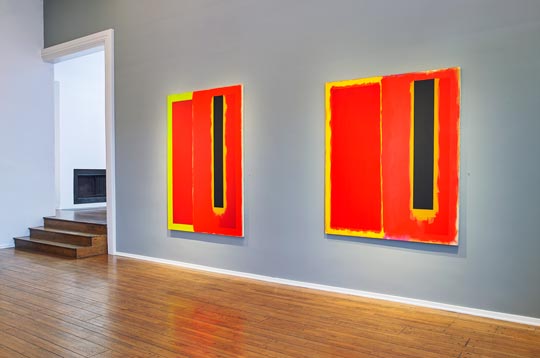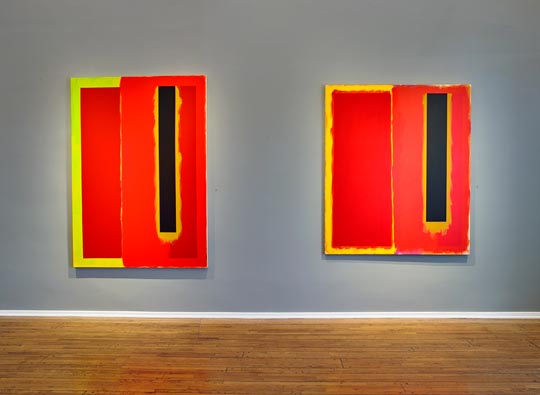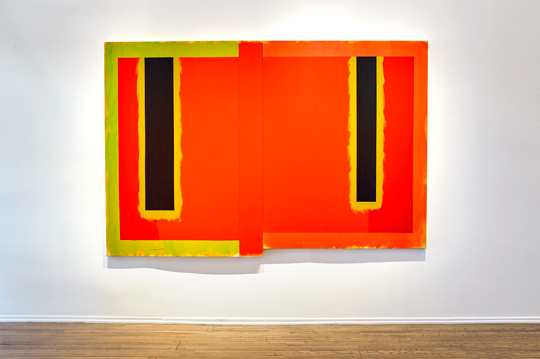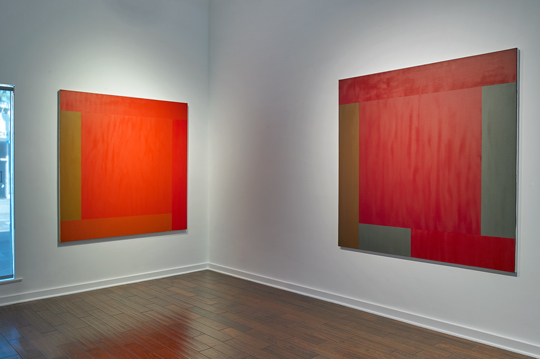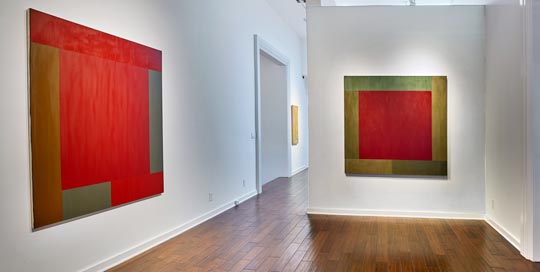DOUG OHLSON
Doug Ohlson: Within The Red Field at Louis Stern Fine Arts
November 14, 2015 - January 9, 2016
Opening November 12, 2015
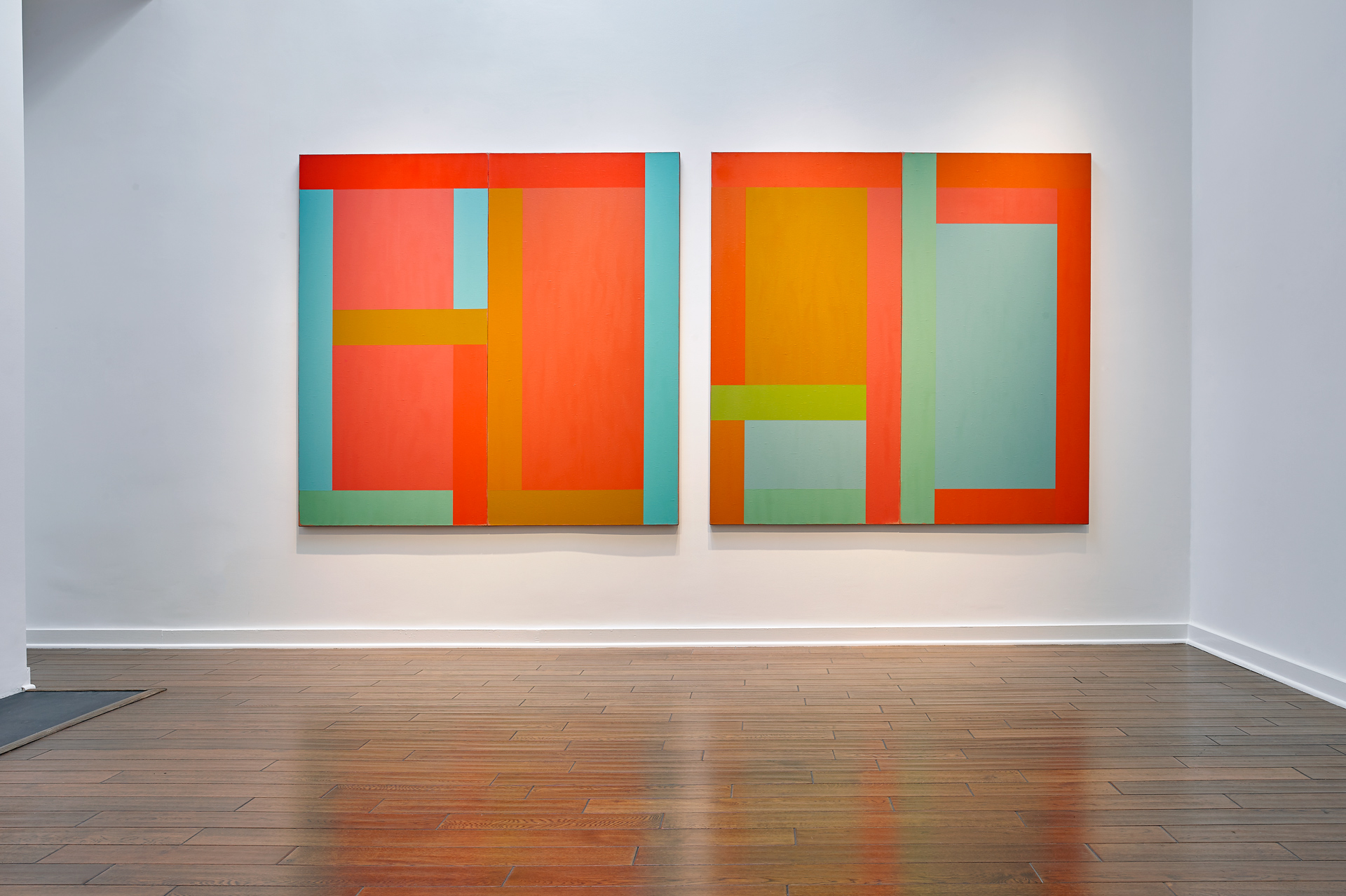
LA Times Review by Christopher Knight. September 17, 2105
Doug Ohlson uses flat planes to create dense works
A tight selection of eight abstract paintings by New York artist Doug Ohlson (1936-2010) pivots on a kind of art that isn't much seen today. Flat planes of color establish an architecture of abstraction, giving otherwise immaterial elements substantial density.
It's not nearly as easy as it looks. In Ohlson's case, it arrived from fully absorbing color precedents like Matisse, Rothko and Barnett Newman, plus the structural finesse of Franz Kline.
At Louis Stern Fine Arts, the oldest and smallest painting — untitled from 1976 — sets out a number of parameters. A mustard-colored vertical canvas just taller than 3 feet and less than 2 feet wide is ringed with a dozen color patches along the edges: pink, gray, sage, dull orange. Within this rectangular field, a second ring of color patches articulates an interior rectangle.
The crisp interior rectangle is an optical illusion, though, formed by chromatic juxtapositions and flat brushwork carefully laid down. All the color shapes are mostly organic, but the stretched canvas and the optical illusion are geometric. Ohlson squares the natural with the cultural to produce a painting of remarkable poise.
He does the same in three canvases from 1979, each focused on a big red square, and in a 1980 two-panel painting — each half itself constructed from two panels. Upping the ante step by step, the show arrives at three blaringly bright, hugely sophisticated works from 1992-'93.
"Cat Eyes," 6 feet high by more than 9 feet wide and assembled from three canvases of different sizes, is a masterwork of coordinated color, opacity, translucence, scale, shape, brushwork, composition and construction. Ohlson juggles the architecture of abstraction to open up consciousness of boundless space, all while emphasizing the painting's strictly finite material presence.
